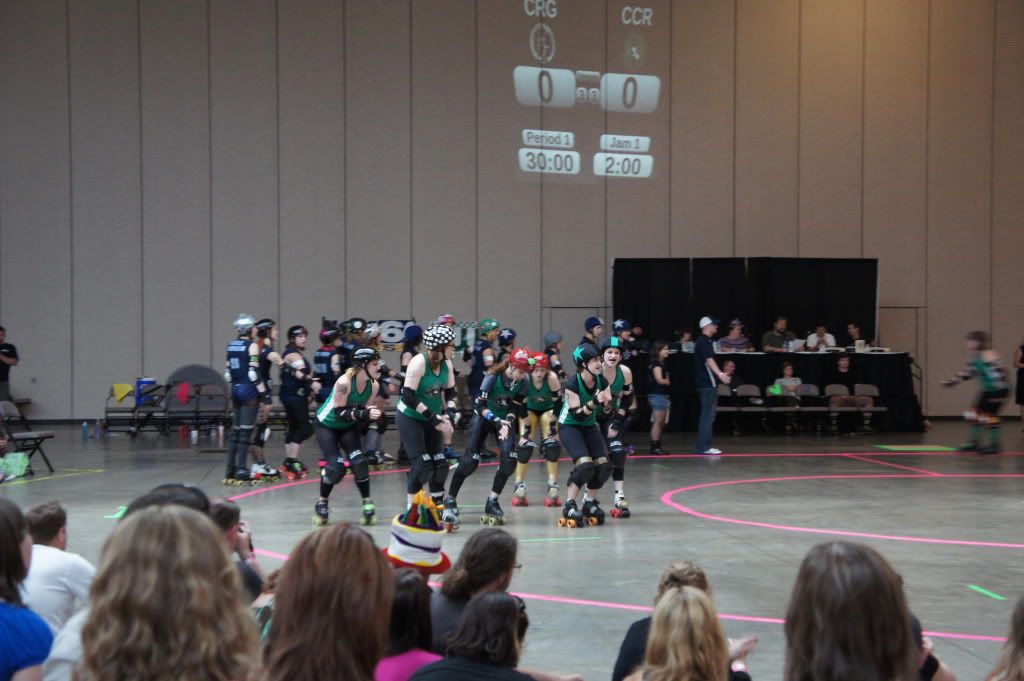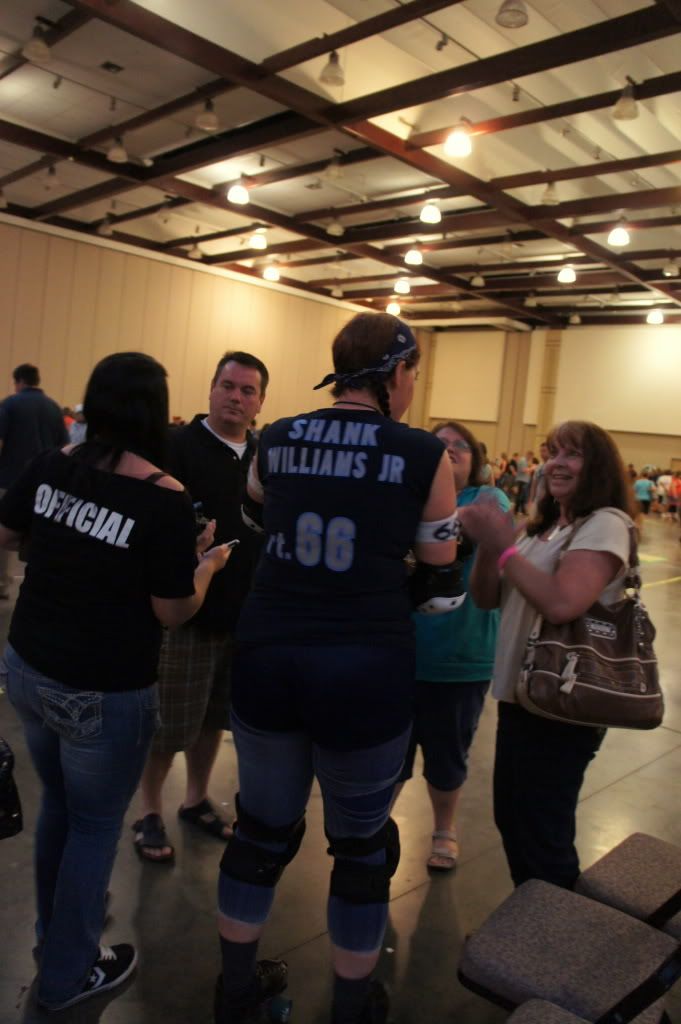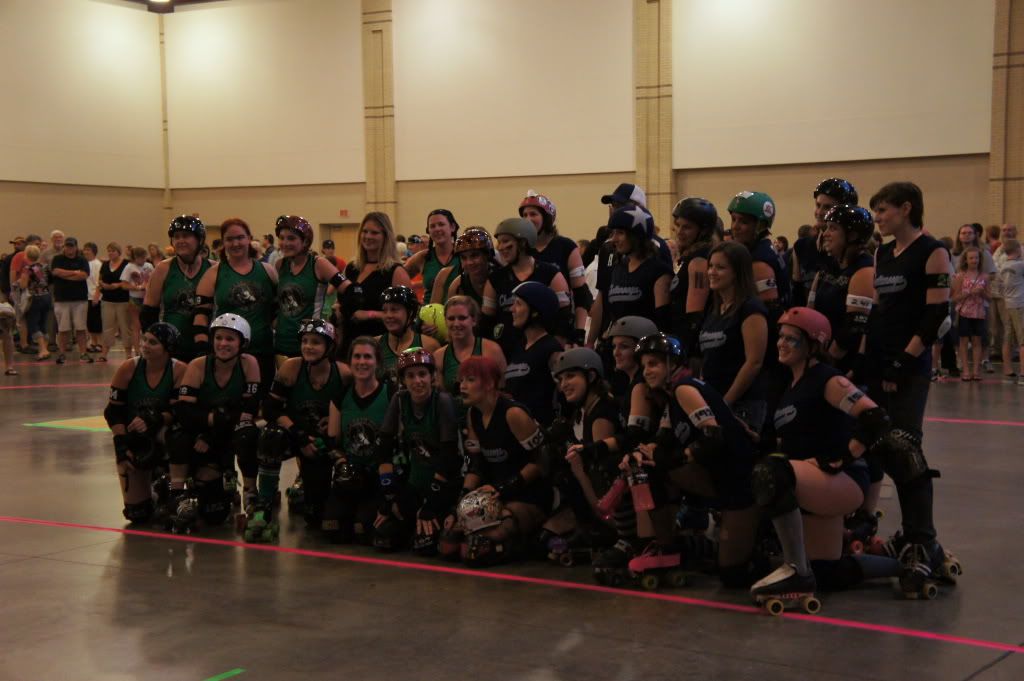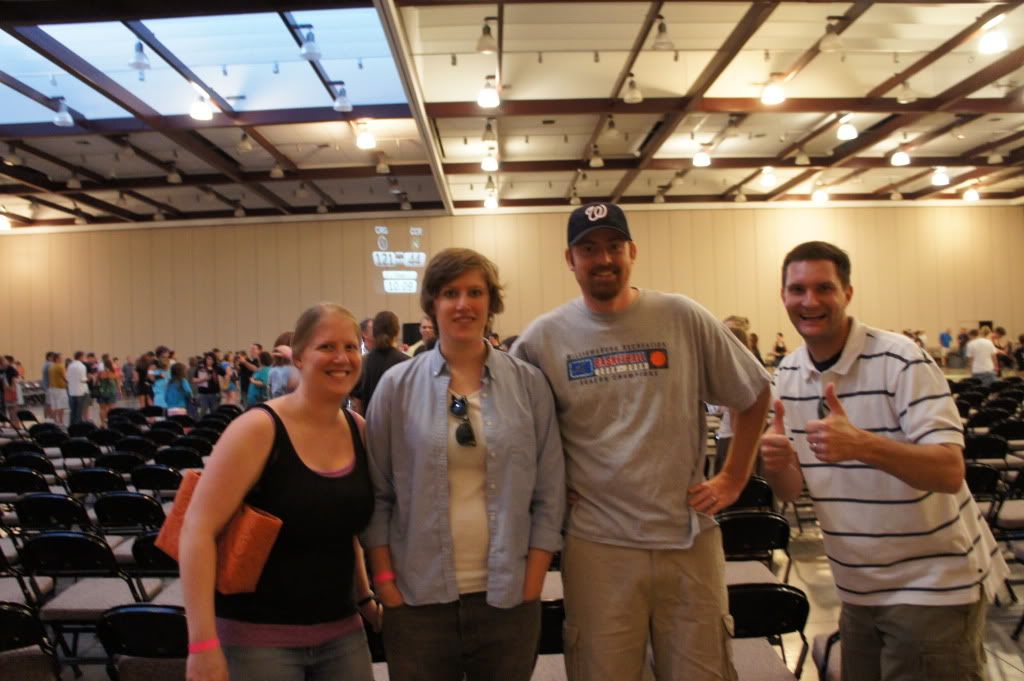When we sat down, we were pretty clueless about the rules of roller derby or what to expect from the bout. Thankfully, the program laid it all out for us and the announcers even gave the crowd step by step instructions before the bout began. "Why, thank you," we thought, "What a great way to make sure the audience is involved."
The way a bout works is this, there are two 30 min halves broken up into 2 min periods called "jams." During each jam there are 10 skaters from each team on the track. Each team has 4 blockers - one of which is a pivot - and one jammer. The jammer from each team is the player responsible for scoring points. So, the blockers skate around the track in a pack playing both offense and defense. The pack formation is ensured by the presence of the pivots. At any given moment during the jam, each blocker must be at least 20 feet from a pivot. The pivots seem to really set the pace of the period. Meanwhile the jammers are trying to fight their way through the pack in an effort to score points. Each blocker that is passed constitutes one point for the jammer. Now, there are more rules about "lead jammers" and their responsibilities, of course because it is a full contact sport there are penalties and so forth, but that's the gist. It's a quick moving sport with plenty of scoring, wipe outs and theatricality.
I was incredibly surprised by the size of the crowd. The Roller Girls seem to have quite a following. There are even people willing to sit in the "suicide seats." Suicide seats can be found on the hard concrete floor all around the oval just out of the bounds of the track. They're called "suicide" for a reason, since more than once we saw skaters barreling full force towards the fans on the ground. I guess instead of walls, flat track roller derby leagues count on spectators to break the skaters falls. Hard Core.
After experiencing my first bout, I was curious about the history of roller derby. So, I did a little research. It has its initial roots back in the dance marathons of the 1930s. Men and women used to skate the rinks for hours on end as endurance competitions. By the late '30s roller derby began to look a little more like what it does today. Throughout the '40s & '50s it became a popular sport in which teams traveled the country participating in bouts for spectator's entertainment. When a few NYC bouts were televised in the late 1940s the sport became a sensation. Its popularity led to regularly televised bouts and even to a few roller derby stars. Though its popularity has waxed and waned ever since, Drew Barrymore's 2009 film "Whip It" seems to have played a small part in the sports' recent revival.
It was a pretty entertaining night and I'd definitely enjoy experiencing another bout. Since this one was such a blowout (Chattanooga 121 - Classic City 44) I'm curious to see a more evenly matched competition. Perhaps there would be a few more elbows thrown and a LOT more drama. Because, as you know, I love the drama.
Have you ever experienced a roller derby bout?






